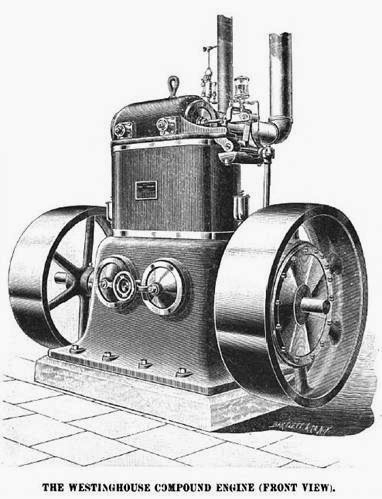By Alice Askins, Education Coordinator at Rose Hill Mansion
For some time I’ve been telling
visitors that we did not know exactly when electricity came to Rose Hill. Recently, I found the answer to that question.
 |
| Advertisement for carbide gas household lighting, ca. 1915-20 |
People
who happened to cast their eyes across Seneca Lake last evening must have been
a little surprised to see so much illumination about the Rob' t J. Swan
mansion, now the home of E. H. PLUMMER.
The occasion was the starting up of his new electric light, and . .
. quite a number were invited over to
inspect the house and the plant. About
seventy responded, returning by carriages at a little after ten o'clock. . . . [Rose Hill] is elegantly furnished
from bottom to top, with electric light in every room and about the
grounds. He has a Dunning horizontal
boiler, a Westinghouse engine and a dynamo of the United States Co., and the
whole runs with less noise than a sewing machine. . . .
According to the newspaper, Mr.
Plummer came from Detroit Geneva shore of Seneca lake
An exchange of emails with our Curator John Marks informed me that the gas lighting in question was probably carbide or acetylene light. In 1892, the Canadian inventor Thomas Willson discovered an economical process for creating calcium carbide. This was an important step in the industrial revolution in chemistry, and it was made possible in the
 |
| Diagram of a house with carbide lighting |
Carbide lighting was largely used
in rural homes, though the Daily
Advertiser said in January, 1896, that “Now is the time for cities desiring to
operate their own gas plants to begin.
Acetylene gas, the new illuminant, is 40 times more brilliant than that
used ordinarily. People using it will
therefore get much more light for less money.
. . . Besides being so much more brilliant, acetylene gas does not
flicker, which will make it still more desirable.”
I had to wonder, though, what
happened to Mr. Plummer’s electrical system. There may be a hint in the
paper. In 1893, Mr. Plummer tried to auction
off all the stock and equipment at Rose Hill.
The sheriff of Seneca
County
 |
| A Westinghouse steam engine, 1890 |
However the electrical system
disappeared, there are reasons a homeowner might have preferred carbide. As my engineer brother Paul explained it to
me, a steam powered dynamo running a generator would require more effort to
turn on the lights, compared to the carbide generator:
- Steam/Electric:
- Start a fire (probably coal.)
- Wait for steam. Monitor water level in boiler constantly so as not to have the house blown up. By the 1890s they would have had semi-automated boiler water level control, but not so automated that it would not have to be watched.
- Start the steam engine. Monitor throttle setting for proper voltage.
- Ongoing maintenance: boiler cleaning, fire box cleaning, ash removal, steam engine oiling and packing repair, steam pipe repair, light bulbs.
 |
| An Edison generator ("dynamo") from 1890 |
Carbide:
- Fill tank with water. Dump in enough carbide powder for a while.
- When lights dim, pour in more carbide.
- Ongoing maintenance: empty and refill the water tank, maybe replace the tank now and then, replace the lamp mantels, and occasionally repair gas pipes.
Carbide
seems to have been the way to go. Now,
at least, I can explain to visitors that electricity came temporarily to Rose
Hill in 1890 – but after that, mysteries remain.
 |
| Carbide Lamps |
No comments:
Post a Comment